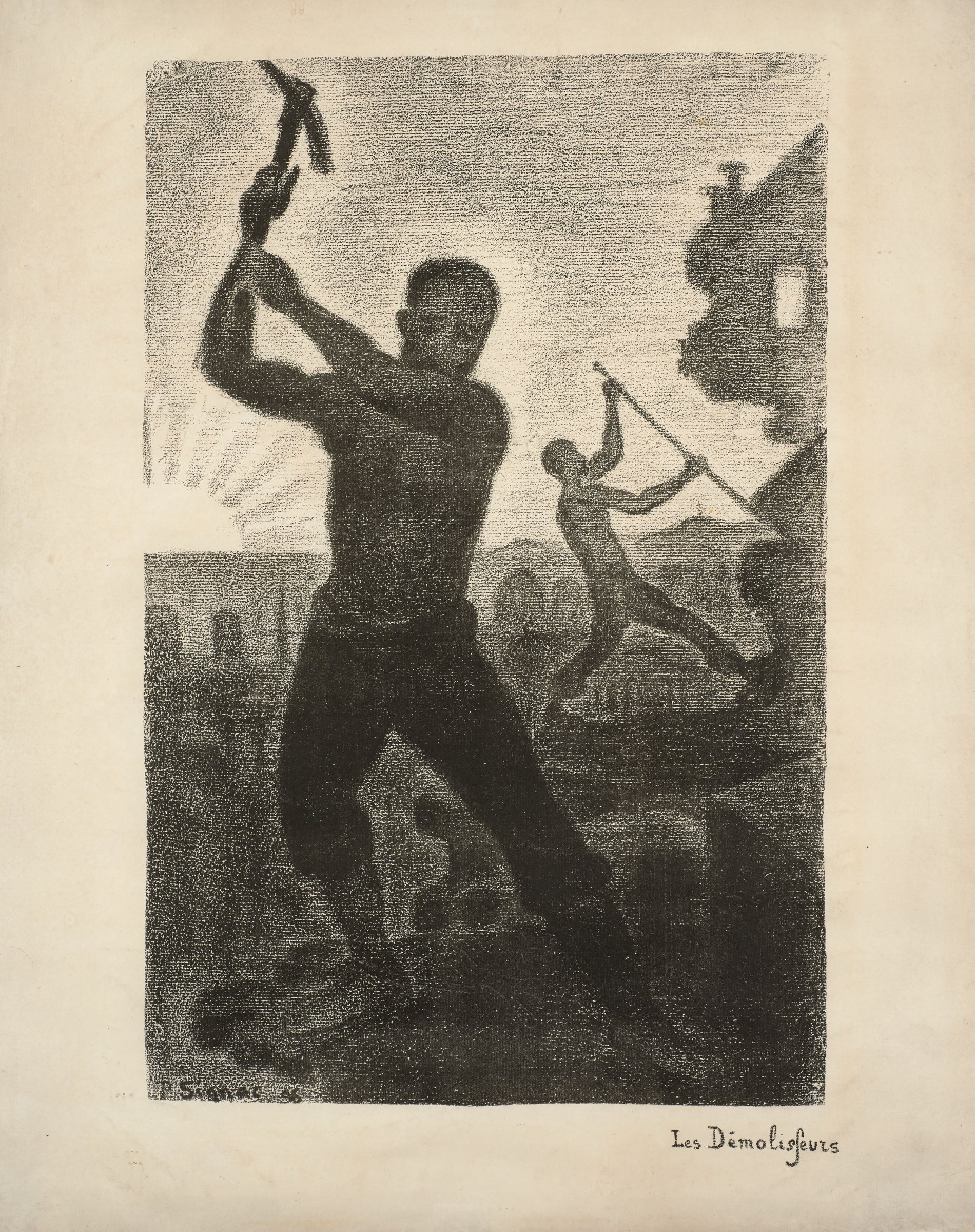
|
|
Les Démolisseurs
Kornfeld & Wick
15
lithograph,
1896, on Van Gelder laid paper, a very fine impression with full
margins (deckle edges above and below), the very rare second state (of
4)*, the composition complete, with the added title (but before the
addition of the publisher's address), and prior the sole edition, which appeared in the October 1896 issue of Les Temps Nouveaux; the lithographic stone imprinting still appears sharp (this print has not
been cleaned), several short (millimetric) tears at the bottom sheet
edge, and slight surface soiling and unobtursive handling creases in
the far margins, otherwise in very good condition
L. (with lithographic title) 518x358 mm. S. 564x452mm.
|
Provenance: a private
Parisian collection
This
important print attests Signac's political commitment to the anarchist cause during the Troisième République, along with Camille Pissarro, who also published a large lithograph** in Les Temps Nouveaux
the same year. Contrary to Pissarro's contribution of an everyday
country scene of peasant women bearing faggots of kindling, Signac
builds a monumental allegory in a forceful composition showing
demolition workers diligently dismantling the old world order so as to
found it anew, symbolized by the rising sun in the background.
Signac had already foreshadowed the subject in an article, Variétés. Impressionnistes et révolutionnaires (published anonymously in La Révolte in June 1891), which evoked taking a pickaxe taken to the old social edifice :
"solide coup de pioche [donné] au vieil édifice social qui craque"
And he thought so much of this composition that he began working on a large painting the following year (right, now in the Musée d'Orsay, Paris), which he kept in his atélier until his death in 1935.***

* Kornfeld and Wick specify, "Tirage à quelques rares épreuves..."; there is only one known impression of the first state.
** See http://www.maitres-des-arts-graphiques.com/Pissarro,%20Porteuses%20de%20Fagots,%20lithograph.html
*** See Bertrand Tillier, La Commune de Paris, révolution sans image?, Seyssel, 2004
There is also an eloquent analysis of this picture and the historical
significance of the anarchist movement in France at the time by Richard
Thompson. See http://www.artsetsocietes.org/f/f-thomson2.html



